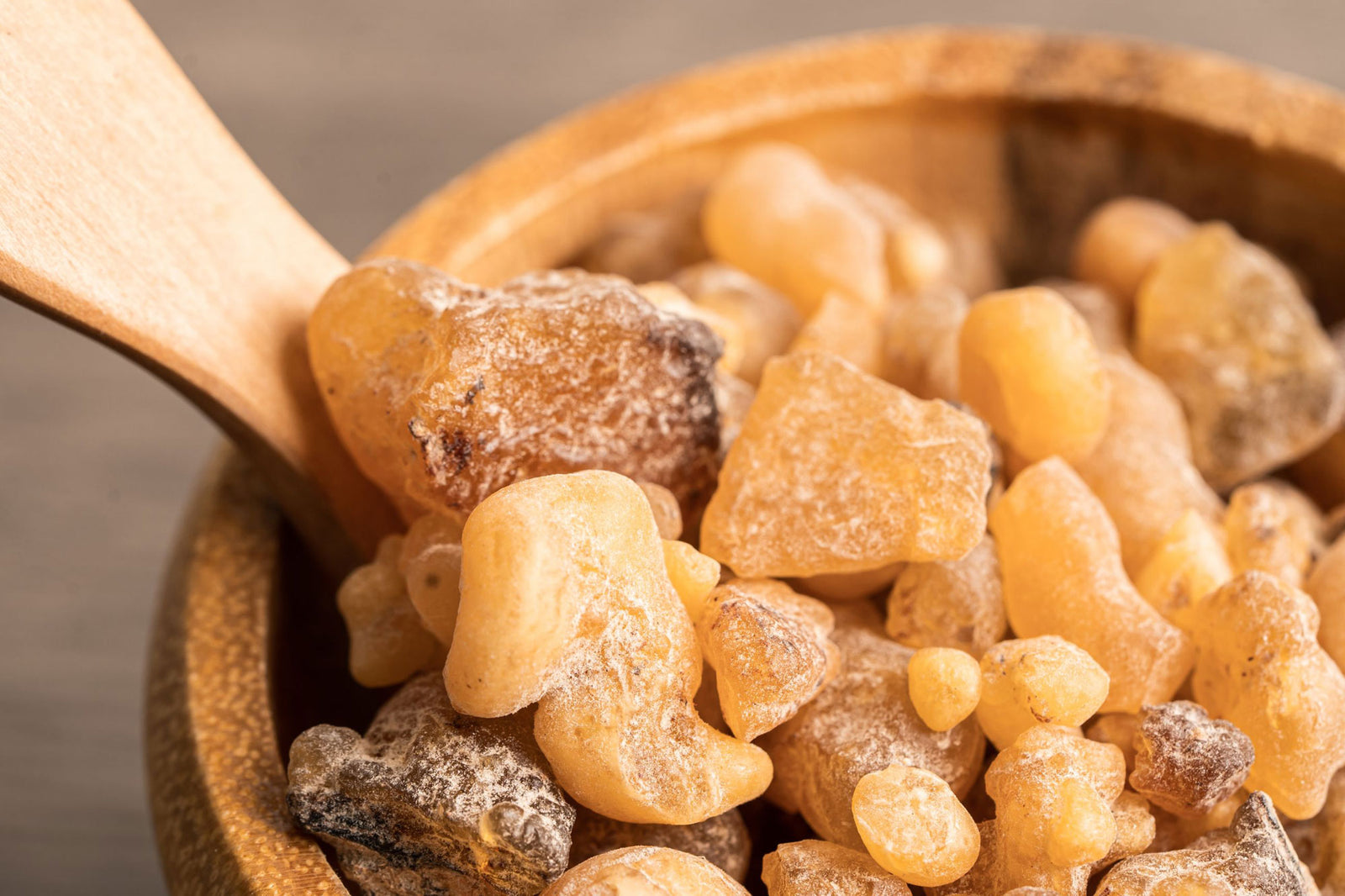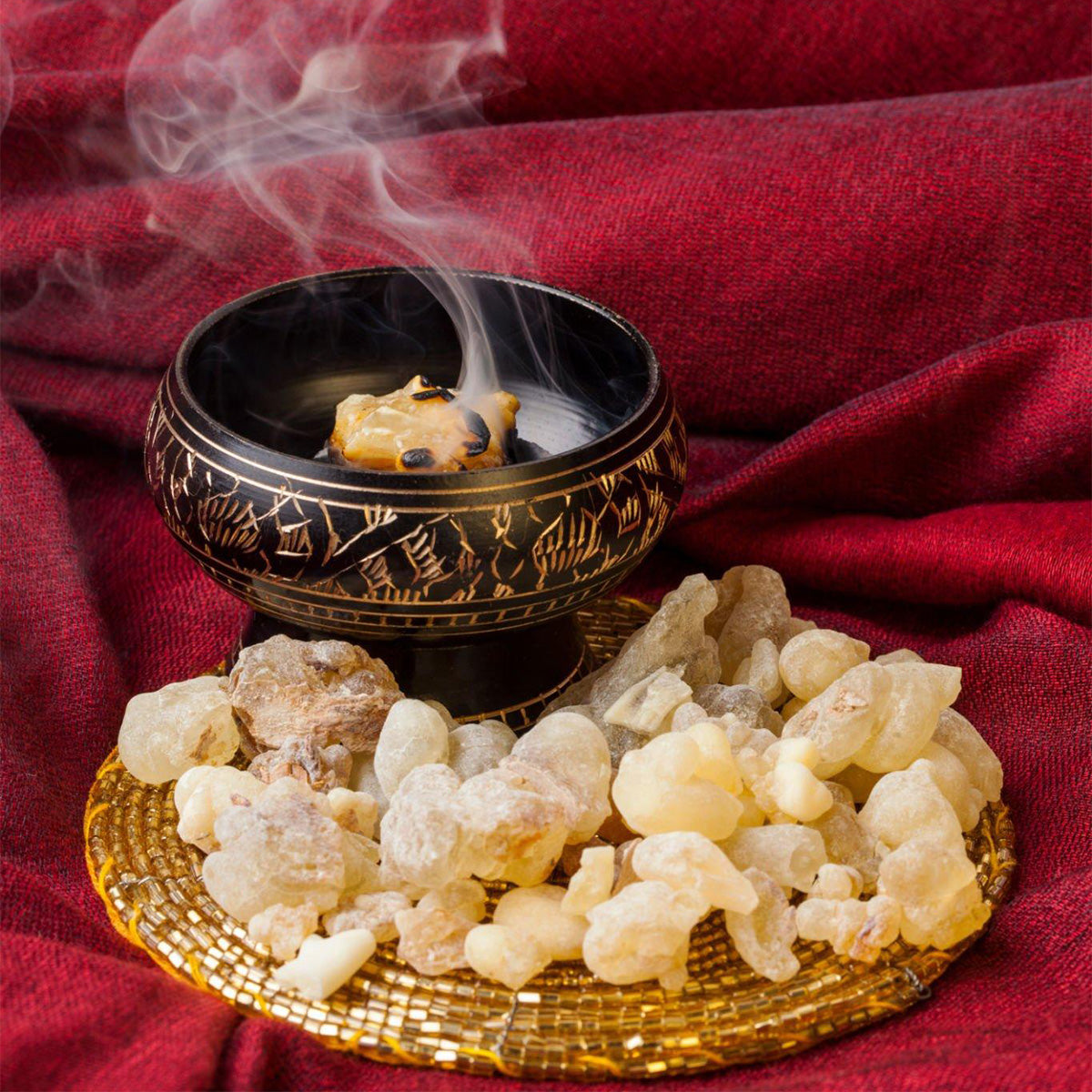What is Frankincense? What Does Frankincense Smell Like?

Frankincense has a warm, earthy scent with hints of citrus and spice. Its aroma can be both soothing and uplifting, often described as resinous and woody.
Frankincense has been cherished for centuries for its distinctive fragrance and therapeutic properties. This aromatic resin, derived from the Boswellia tree, is used in incense and essential oils. Many people associate its scent with spiritual rituals and meditation practices. The complex aroma often evokes feelings of calm and introspection.
Frankincense blends well with other essential oils, enhancing its appeal in aromatherapy. People often describe it as grounding, making it a popular choice for creating a serene atmosphere. Understanding its scent can deepen your appreciation for this ancient substance and its many uses in modern wellness practices.
The Aromatic Profile Of Frankincense
Frankincense has a rich and complex scent. Many people describe it as warm and earthy. This unique aroma offers both calming and uplifting qualities. Let's explore its aromatic profile.
Key Notes In Frankincense Aroma
The aroma of frankincense consists of several key notes:
-
Citrus: A fresh, zesty undertone.
-
Woody: Deep, grounding scents.
-
Spicy: Subtle hints of warmth.
-
Resinous: A rich, sticky quality.
-
Earthy: A connection to nature.
This combination creates a balanced and intriguing fragrance. Many people use frankincense for meditation and relaxation.
Variations By Origin And Species
Frankincense comes from different regions and species. Each has a unique scent profile:
|
Species |
Origin |
Aroma Characteristics |
|---|---|---|
|
Boswellia serrata |
India |
Warm, spicy, slightly sweet |
|
Boswellia carterii |
Somalia |
Bright, citrusy, woody |
|
Boswellia frereana |
Oman |
Rich, complex, resinous |
Each type of frankincense offers a different experience. Users often choose based on their personal preference.

Historical Significance Of Frankincense
Frankincense has a rich history that spans thousands of years. This aromatic resin has been valued for its unique scent and various uses. Ancient cultures cherished it for trade, rituals, and medicine. Its importance remains evident in modern times.
Frankincense In Ancient Cultures
Frankincense played a vital role in many ancient civilizations. Here are some key points:
-
Egyptians: Used it in embalming and rituals.
-
Greeks: Employed it in medicine and religious ceremonies.
-
Romans: Burned it in temples to honor gods.
-
Chinese: Used it in traditional medicine for healing.
This resin was often traded along the famous Incense Route. It was a symbol of wealth and status.
Religious And Spiritual Uses Throughout History
Frankincense has deep roots in various religious traditions. Its uses include:
-
Christianity: Given as a gift to Jesus at birth.
-
Judaism: Used in temple offerings and rituals.
-
Buddhism: Burned to enhance meditation and focus.
Today, many people still use frankincense for spiritual practices. Its calming scent promotes relaxation and mindfulness.
|
Culture |
Use |
|---|---|
|
Egyptian |
Embalming and rituals |
|
Greek |
Medicine and ceremonies |
|
Roman |
Religious offerings |
|
Chinese |
Traditional medicine |
Harvesting The Aromatic Resin
Frankincense is more than just a scent. It’s a rich, aromatic resin harvested from the Boswellia tree. This process is traditional and deeply rooted in history. Understanding how this resin is gathered reveals its unique qualities.
The Frankincense Tree: A Botanical Marvel
The Frankincense tree is not your average tree. It thrives in harsh, dry climates. Here are some key facts:
-
Species: Boswellia sacra, Boswellia carterii
-
Height: Typically grows 2-8 meters tall
-
Appearance: Gnarled trunk with small, oval leaves
-
Habitat: Grows in regions like Oman, Somalia, and India
This tree produces a milky sap. When exposed to air, it hardens into the resin known as frankincense. This resin has been used for centuries in incense and perfumes.
Traditional Harvesting Techniques
Harvesting frankincense requires skill and patience. Here’s how it’s done:
-
The harvesters locate mature trees.
-
They make shallow cuts in the bark.
-
This causes the sap to ooze out.
-
The sap hardens into resin over several days.
-
Once hardened, the resin is collected.
These techniques have been passed down for generations. Each cut is made carefully to ensure the tree remains healthy. This sustainable practice ensures a continued supply of this precious resin.
|
Step |
Description |
|---|---|
|
1 |
Locate mature Boswellia trees. |
|
2 |
Make shallow cuts in the bark. |
|
3 |
Allow sap to ooze and harden. |
|
4 |
Collect the hardened resin. |
The result is a fragrant resin used in various products. Its scent is highly valued in many cultures. Understanding this process enriches appreciation for frankincense.
Chemical Composition Of Frankincense
Frankincense, a resin from the Boswellia tree, has a unique scent. Its aroma comes from various chemical compounds. Understanding these compounds helps explain its captivating fragrance.
Compounds Contributing To Its Distinctive Scent
Several key compounds create the unique smell of frankincense. Here’s a breakdown of the main contributors:
|
Compound |
Percentage |
Characteristics |
|---|---|---|
|
Alpha-Pinene |
30% |
Fresh, pine-like aroma |
|
Beta-Myrcene |
25% |
Earthy, herbal scent |
|
Limonene |
10% |
Citrusy, uplifting fragrance |
|
Incensole Acetate |
5% |
Warm, sweet aroma |
|
Alpha-Boswellic Acid |
3% |
Resinous, deep scent |
These compounds create layers of scent. The combination results in a rich, calming aroma.
Impact Of Processing On Aroma
Processing methods greatly influence the aroma of frankincense. Different techniques lead to varied scents. Here are some common methods:
-
Steam Distillation: Extracts essential oil with a fresh scent.
-
Solvent Extraction: Produces a richer, fuller aroma.
-
Cold Pressing: Maintains original notes, offering a pure fragrance.
The choice of processing method affects the final product’s scent profile. Freshly harvested resin smells different from processed oil. Understanding these methods enhances appreciation for frankincense’s complex aroma.
Sensory Experience Of Frankincense
Frankincense offers a unique and captivating scent. It engages the senses and creates a soothing atmosphere. Many people describe its aroma as complex and rich.
Describing The Scent: From Pine To Lemon
The scent of frankincense can be challenging to define. It has various notes that come together beautifully. Here are some key characteristics:
-
Pine-like aroma: Fresh and uplifting.
-
Citrusy hints: A touch of lemon and orange.
-
Earthy undertones: Warm and grounding.
-
Spicy nuances: A hint of warmth.
This blend creates a fragrance that is both calming and energizing. Many enjoy frankincense in meditation and relaxation practices. Its scent can transport you to ancient times.
The Evolving Scent Of Burned Frankincense
Burning frankincense changes its aroma. The heat releases different notes over time. This transformation can be surprising and delightful. Below is a table showing how the scent evolves:
|
Time (Minutes) |
Fragrance Notes |
|---|---|
|
0-5 |
Fresh pine and citrus |
|
5-10 |
Earthy and slightly sweet |
|
10-20 |
Warm, spicy undertones |
|
20+ |
Rich, deep resinous scent |
This evolving scent creates a dynamic experience. Many find joy in exploring its different layers. Frankincense not only smells divine but also enhances the mood.
Therapeutic Uses And Benefits
Frankincense has a rich history in healing practices. Its aroma is earthy and calming. Many use it to enhance wellness. Let's explore its uses and benefits.
Frankincense In Aromatherapy
In aromatherapy, frankincense oil is popular. It helps create a peaceful environment. Many people use it for meditation.
-
Promotes relaxation
-
Reduces anxiety
-
Enhances spiritual connection
Diffusing frankincense oil can uplift your mood. It's often blended with other essential oils.
Potential Health Benefits
Frankincense offers various health benefits. Research highlights its potential in several areas:
|
Benefit |
Description |
|---|---|
|
Anti-inflammatory |
May reduce inflammation in the body. |
|
Immune Support |
Can boost the immune system. |
|
Skin Health |
Helps improve skin appearance. |
|
Respiratory Aid |
May support respiratory health. |
Using frankincense may improve overall well-being. It can be applied topically or inhaled.
Frankincense In Modern Perfumery
Frankincense is a unique and ancient scent. It has a rich history in perfumes. Today, its warm and resinous aroma captivates many. Modern perfumers use it to create memorable fragrances. This resin brings depth and complexity to various blends.
Crafting Contemporary Fragrances
Modern perfumers craft fragrances using frankincense in creative ways. They blend it with various notes to enhance its appeal. Here are some popular fragrance types featuring frankincense:
-
Woody Scents: Frankincense adds warmth and richness.
-
Oriental Fragrances: It creates an exotic and mysterious vibe.
-
Spicy Blends: Enhances warmth and depth with spices.
-
Citrus Scents: Provides a refreshing contrast to sweetness.
Frankincense is often found in both niche and designer perfumes. It brings a sense of luxury and sophistication to every bottle.
Blending With Other Scents
Frankincense blends beautifully with various aromas. Here are some popular combinations:
|
Complementary Scents |
Effect |
|---|---|
|
Myrrh |
Creates a deep, resinous blend. |
|
Vanilla |
Balances warmth with sweetness. |
|
Rose |
Adds floral elegance and softness. |
|
Cedarwood |
Enhances earthy and woody notes. |
These combinations highlight frankincense’s versatility. It enriches fragrances with its unique character. Perfume lovers enjoy discovering new ways to experience this resin.

Credit: www.harlemcandlecompany.com
Preserving The Essence Of Frankincense
Frankincense, known for its unique scent, holds cultural significance. This aromatic resin comes from the Boswellia tree. Proper care ensures its essence remains intact. Sustainable practices help protect this ancient resource. Understanding how to store and use frankincense is vital for longevity.
Sustainable Harvesting Practices
Sustainable harvesting is crucial for preserving frankincense. Following responsible methods protects Boswellia trees and ensures their survival. Here are key practices:
-
Selective Tapping: Harvesting only mature trees prevents over-exploitation.
-
Minimal Damage: Careful cutting techniques reduce harm to the tree.
-
Replanting: Planting new trees helps maintain population levels.
-
Community Involvement: Engaging local communities fosters stewardship.
These practices not only support the environment but also ensure quality. High-quality frankincense has a richer aroma and greater benefits.
Storing And Caring For Frankincense Products
Proper storage keeps frankincense fresh and fragrant. Follow these tips for best results:
-
Keep Away from Light: Store in dark containers to avoid degradation.
-
Control Humidity: Maintain low humidity levels to prevent mold.
-
Avoid Heat Sources: Keep away from stoves or direct sunlight.
-
Seal Tightly: Use airtight containers to retain aroma.
Regularly check your supplies. Discard any that show signs of spoilage. Enjoy the rich scent of well-preserved frankincense.

Credit: igneousproducts.com
Frequently Asked Questions
What Are The Main Notes In Frankincense Scent?
Frankincense has a complex aroma profile. It typically features warm, woody notes combined with hints of citrus and spice. The scent is both earthy and slightly sweet, making it unique. This blend is often associated with relaxation and meditation, enhancing its appeal in aromatherapy.
How Does Frankincense Smell Compared To Other Scents?
Frankincense offers a distinct aroma that differs from common fragrances. Unlike floral or fruity scents, it has a rich, resinous quality. Its warm, woody essence is grounding, often evoking feelings of peace. This makes it popular in spiritual practices and holistic healing.
Is Frankincense Scent Pleasant For Everyone?
While many find frankincense pleasant, preferences vary. Its unique blend of earthy and sweet notes may appeal to some but not all. People often associate the scent with tranquility and spirituality. However, personal taste is subjective, so it's best to try it yourself.
Can Frankincense Scent Improve Mood?
Yes, frankincense is known to have mood-enhancing properties. Its calming aroma is often used in meditation and relaxation practices. Many users report feeling less anxious and more centered after exposure. This makes it a popular choice in aromatherapy for emotional well-being.
Conclusion
Frankincense offers a captivating aroma that blends warmth and earthiness. Its scent can evoke feelings of calm and grounding. This unique fragrance has been cherished for centuries in various cultures. Whether used in meditation or perfumery, understanding its scent enhances appreciation.
Embrace the rich history and benefits of frankincense in your life.


